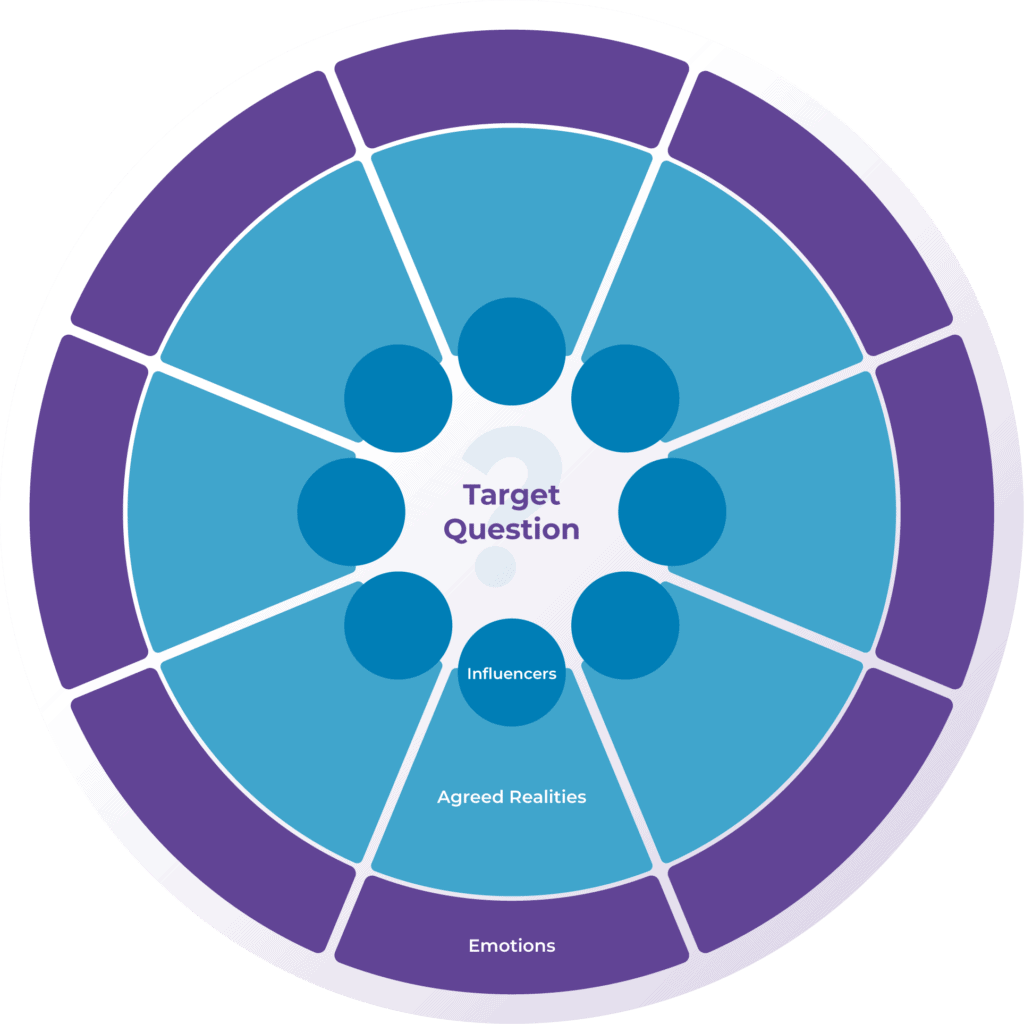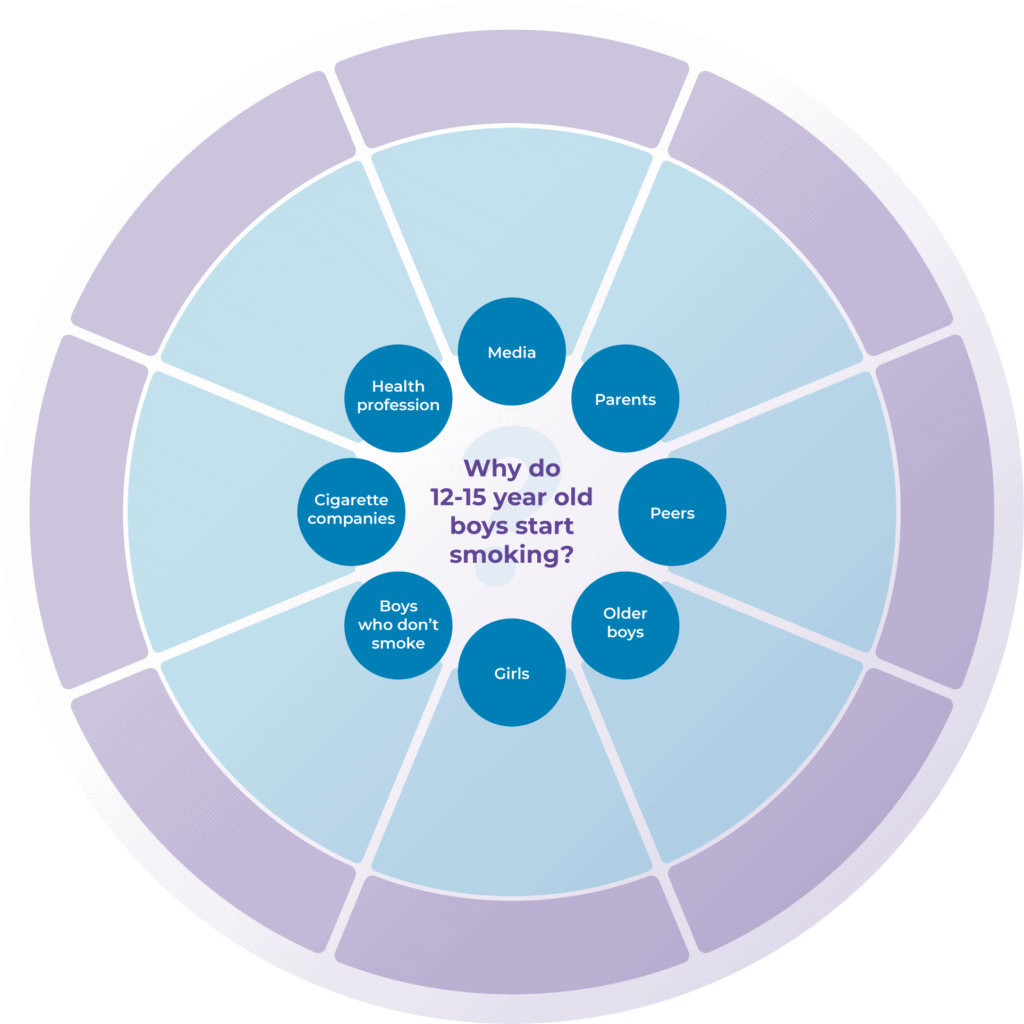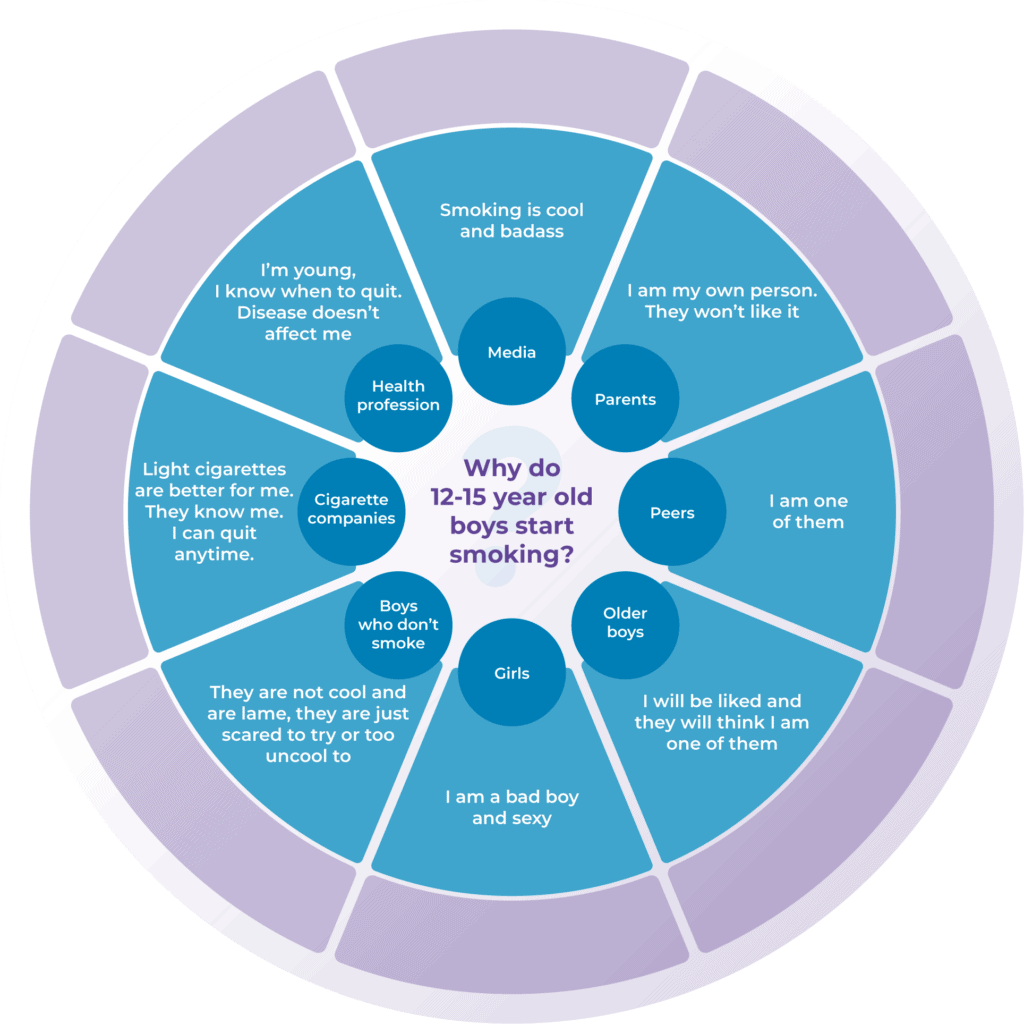How to Zero in on an Audience Copy
Who are you talking to? It may seem like a simple question, but it is one of the questions many communicators struggle to answer. Campaigners and NGOs will often say “everyone” or spin out a very broad target audience statement.
As media becomes more segmented, knowing EXACTLY whom you are speaking to is essential. In the digital world there is an emphasis on putting the audience first, not the media. With the rise of social media, it has become essential to reach your ideal target audience. This is called a micro target audience; a hyper segmented audience you can truly make an impact on to create behavioural change.
The RNTC mapping technique is based on the technique that is used by many marketing organisations and is sometimes called “stakeholder mapping”, or “empathy mapping”. The technique was originally developed to move people to purchase products and services (traditional marketing). However, the map has applications for all communication including behavioural change.
This technique helps you identify:
- An attitude, behaviour, skill or knowledge gap in your audience
- Influencers for your audience
- Their beliefs about current behaviour, attitude or knowledge
- Emotional motivators
Broad target audiences
Broad target audiences have been a staple of media and communications for decades, Broadcasters use these to segment their shows, publications and articles. Typically, a broad target audience is based on Demographics and Geographical information.
Demographic Information | Geographic Information | |
Age | Occupation | Resources |
Gender | Religion | Cultures |
Ethnicity | Nationality | Neighbourhoods |
Income | Lifecycle | City |
Qualification | Language | Region |
Marital Status | Race | Countries |
Sexuality | Media Use | Climate |
We can tell a great deal about a person simply by examining the demographic data about their life – their age, income level, education, occupation – but by itself, this data is only of limited use. It tells us nothing about their aspirations, their beliefs, their attitudes, or any other subjective psychological measure. Defining your broad target audience is the starting point. It is your first distillation of your audience. The next step will be to refine this audience even further.

Go to Assignment 7.1.1: Define your broad target audience (optional).
Micro target audiences
Once you have defined a broad target audience, the next step is to create a specific target audience. To do this, the mapping technique is used. The technique was originally developed to move people to purchase products and services in traditional marketing. However, the map has applications for all communication, including behavioural or attitudinal change that is ultimately the aim.

The map uses several concentric circles from the Target Question. It consists, from the centre moving outward:
- A Target question, in which a behaviour is identified.
- The Influencers that influence the behaviour or belief.
- Agreed realities, or the beliefs about the behaviour (or attitude) and finally,
- Emotions/feelings or “emotional payoff” for the behaviour.
Once the audience that is being spoken to has been discovered, strategies can be developed on how to influence this group through counter- and alternative narratives. As stated previously, the map is based on a behaviour change model. It requires the identification of a behaviour in the target audience. Once you discover why the audience has this behaviour, through understanding their beliefs, influencers and emotional drivers, you can then bring them new knowledge, skills or attitudes to change, or shift it.
STEP 1: TARGET AUDIENCE QUESTION
At the centre of the map is a Target Question. A target question is a question related to behaviour. The more specific the question is, the better your map will be.
It starts with why? The “why question” contains a community (a group that have a shared belief) and a freely chosen behaviour (any behaviour the audience does at will).
A community is a group of people who share a similar belief. “Teenagers”, “Mothers”, “Muslims” are all communities.
A freely chosen behaviour is any behaviour the audience does at will. The community is not forced to do it, they chose to do it. While many people think tradition and religion are not freely chosen behaviours, they are indeed. One may choose to celebrate religious festivals or observe religious traditions.
For example: in order to build a campaign to get teenagers to stop smoking, a good target question would be:
- Why do 12-15-year-old boys (community) start smoking (freely chosen behaviour)?
Examples of other target questions:
- Why do older Greek men drink Ouzo?
- Why do young men from Paris support PSG?
- Why do Polish University students share fake news articles?
- Why do Dutch teenagers smoke weed?

Go to Assignment 7.1.2: Target question activity.
STEP 2: INFLUENCERS

In the second concentric circle, you should list the major communities of influencers that influence the behaviour or belief. These are the people, or things, that the community you have placed in your target question are influenced by. Always include their peers (peer group pressure), money, gender, sex, opposing views. Who are the experts for this group? Who are their celebrities? Each influencer gets their own slice of the map. If you know specific celebrities include them in influencers.
For example: Cigarette companies want to sell cigarettes through their ads and try to influence young boys, but also girls and peers have an influence on the decisions 12-15-year-old boys make.

Go to Assignment 7.1.3: Influencer mapping.
STEP 3: AGREED REALITY

An agreed reality is the belief that the community in the middle of the map has about how the influencers views their behaviour. Think about it as if you were looking from the influencer’s point of view. It is not the reality of the influencer, but the reality the target community has based on the influencer. When examining agreed realities, always approach it from the perspective of the target community in the centre of the map. It is good to use common phrases or slang words that your audience would use in explanation of their beliefs.
For example: The smoking 12-15-year-old boys believe that girls think that it is sexy and cool to smoke. Or cigarette companies make the boys believe that light cigarettes are better for them and that they can quit anytime.
STEP 4: EMOTIONAL PAYOFF

Emotions are essential in understanding behaviour. It is not true that logic is responsible for our decision-making; rather it is emotion that is the biggest driver. It is therefore necessary to understand what our audience feels about the behaviour in relation to the influencer. In each slice of the map, you should place a corresponding emotional payoff.
For example: The smoking 12-15-year-old boys believe that girls think that it is sexy and cool to smoke and they therefore feel desired. Or cigarette companies make the boys believe that light cigarettes are better for them and that they can quit anytime, and they therefore feel in control.

Go to Assignment 7.1.4: Create your own target audience map (optional).
Target Audience Statement
A target audience statement is created by reading a wedge or slice of the map from the target question to the emotional payoffs. It does not assume that you will reach everyone, that is why the statement starts with the word ‘some’. Each slice of the map will present you with a different target audience statement.
Some… Community + Freely Chosen Behaviour + Influencer + Agreed reality + Emotional Payoff.
For example: Some… 12-15-year-old boys smoke because they believe that girls think that it is sexy and cool and they therefore feel desired.

Go to Assignment 7.1.5: Formulate your target audience statement (optional).

Go to Assignment 7.1.6: Social mining activity (optional).
Key takeaways
- Mapping is the process of understanding the logic and emotional drivers of your audience.
- The Target question is always behaviour based. Behaviour is the outward expression of belief or attitudes.
- Agreed Realities are not what you believe or know what is right, rather it is the “logic” of the target community in the map. If they believe the earth is flat, what is THEIR Logic.
- Emotions are essential in understanding why we do things.
